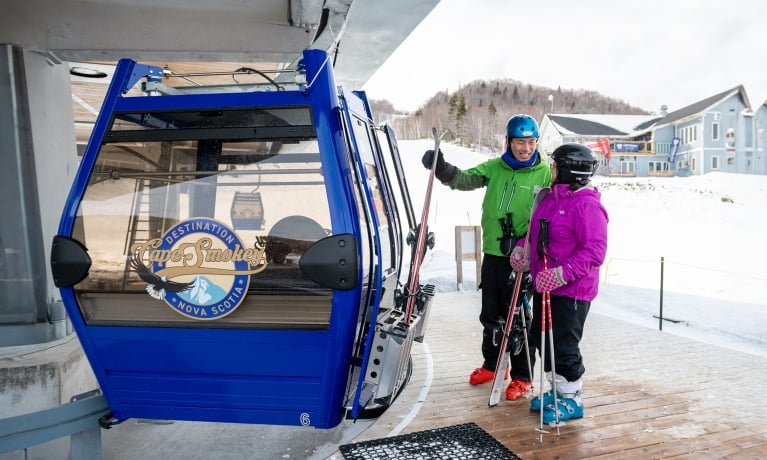Ensuring Snowmobile Safety: Essential Guidelines for Riders
Snowmobiling is an exciting way to explore winter landscapes, but safety should always come first. Proper preparation, the right gear, careful trip planning and effective risk management are key to ensuring a safe and enjoyable ride. This guide covers the essentials to help you stay safe on the trails.
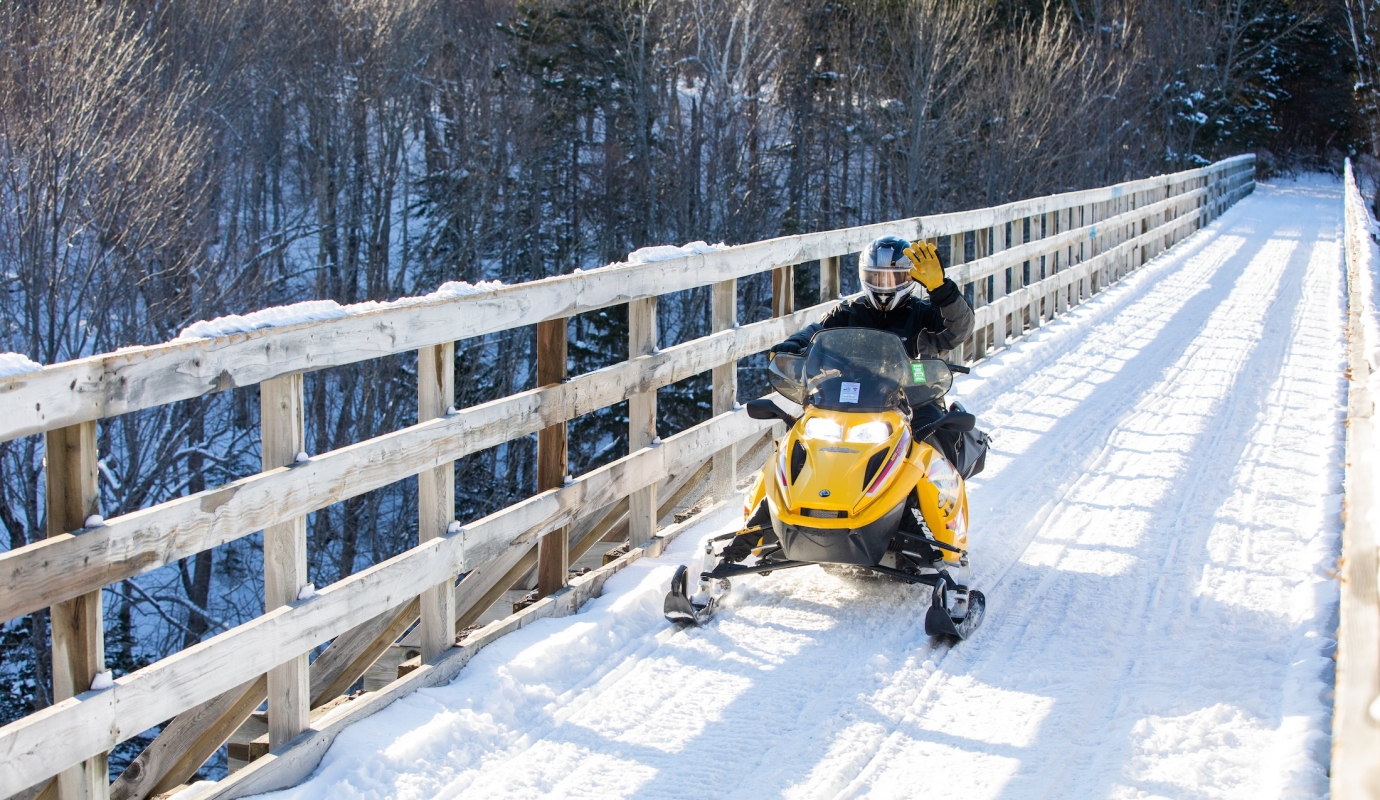
Essential Riding Apparel
Wearing the right clothing is crucial to staying warm, dry and protected from the elements.
- Layered Clothing – Start with a moisture-wicking base layer to keep sweat off your skin. Add an insulating mid-layer, such as fleece or wool, for warmth. Finish with a waterproof, windproof outer layer to protect against cold temperatures and snow.
- Helmet and Eye Protection – Always wear a DOT-approved helmet to reduce the risk of head injuries. Use a face shield or goggles to protect your eyes from wind, snow and debris.
- Gloves and Boots – Choose insulated, waterproof gloves for warmth and dexterity. Your boots should be waterproof, insulated and provide good traction to prevent slips on icy surfaces.
- Additional Accessories – A balaclava or face mask helps protect against frostbite. Reflective elements on your clothing improve visibility in low-light conditions.
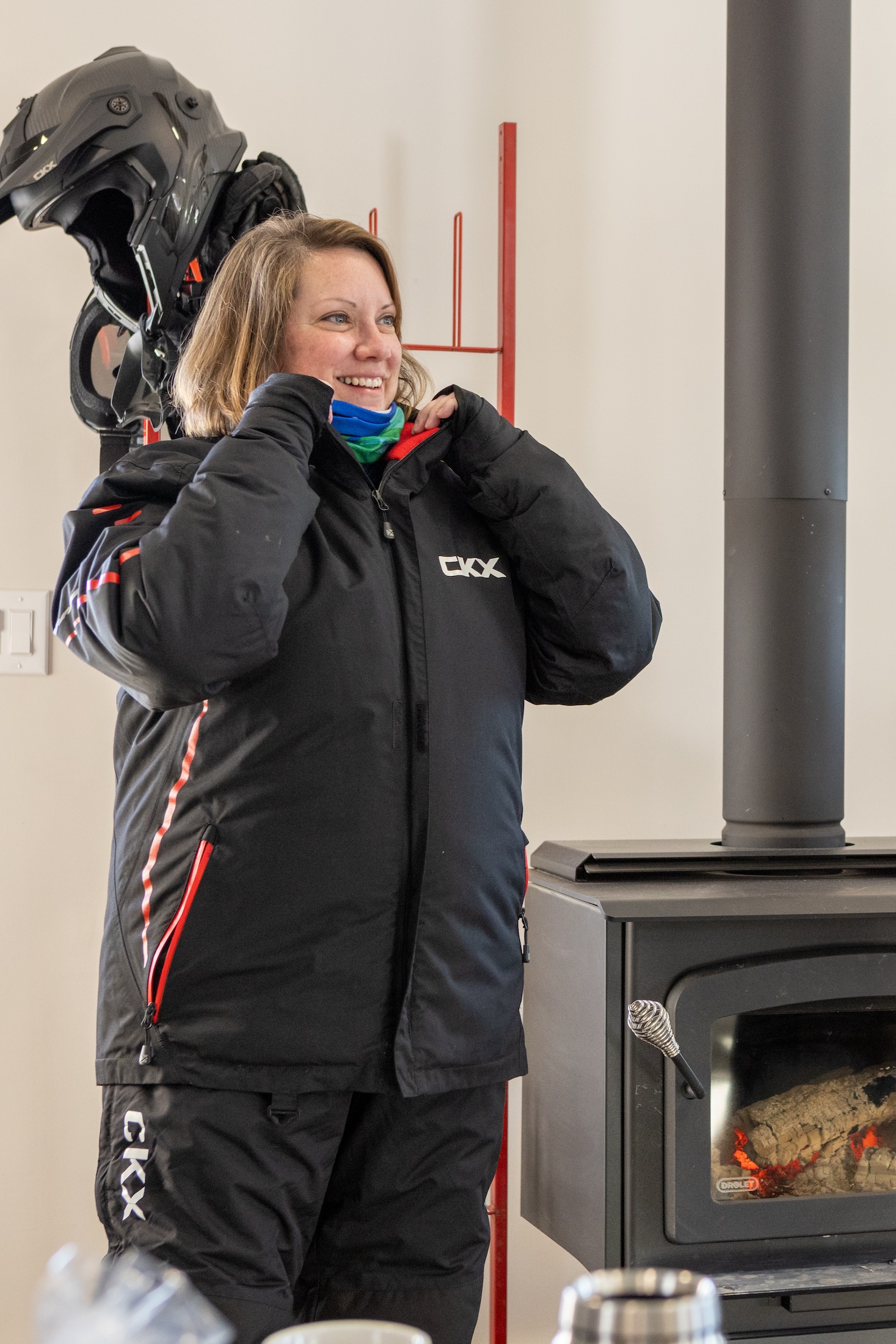
Essential Gear to Pack
Having the right gear ensures you’re prepared for any situation on the trail.
- Tool Kit – Carry a basic tool kit with a spark plug wrench, screwdrivers, pliers, an adjustable wrench, extra gasoline and a spare drive belt for minor repairs.
- First Aid Kit – Pack bandages, gauze, adhesive tape, antiseptic wipes, antibiotic ointment, a thermal blanket and pain relievers. Keep everything in a waterproof container.
- Survival Gear – Bring a map, compass or GPS, flashlight with extra batteries, high-energy snacks, water, fire-starting materials and a multi-tool. Keep an offline copy of a map on your phone or a paper copy of the trail map.
- Ice Safety Equipment – If you plan to cross frozen lakes or rivers, carry ice picks to help pull yourself out if you break through the ice. Keep them accessible by threading them through your sleeves.
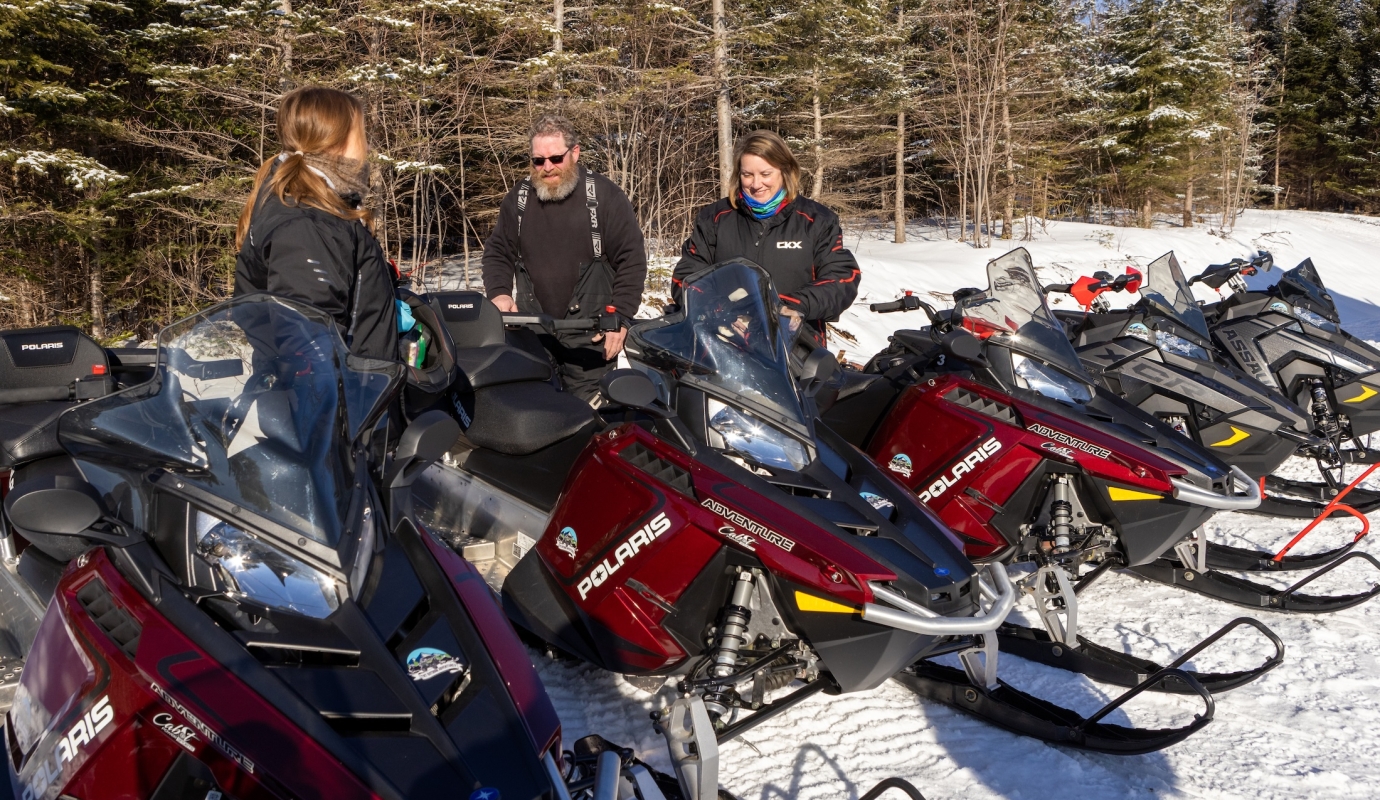
Effective Trip Planning
Planning ahead helps ensure a smooth, safe ride.
- Route Selection – Choose trails that match your experience level and check trail maps for closures, hazards or detours. Identify fuel stops and rest areas along the way.
- Time Management – Estimate how long your trip will take, factoring in breaks and potential delays. Make sure you have enough fuel, food and supplies for the entire journey.
- Riding Companions – Never ride alone. A group of at least two ensures help is available if something goes wrong.
- Tell Someone Your Plan – Before heading out, inform a friend or family member of your route, expected return time and emergency contact information.
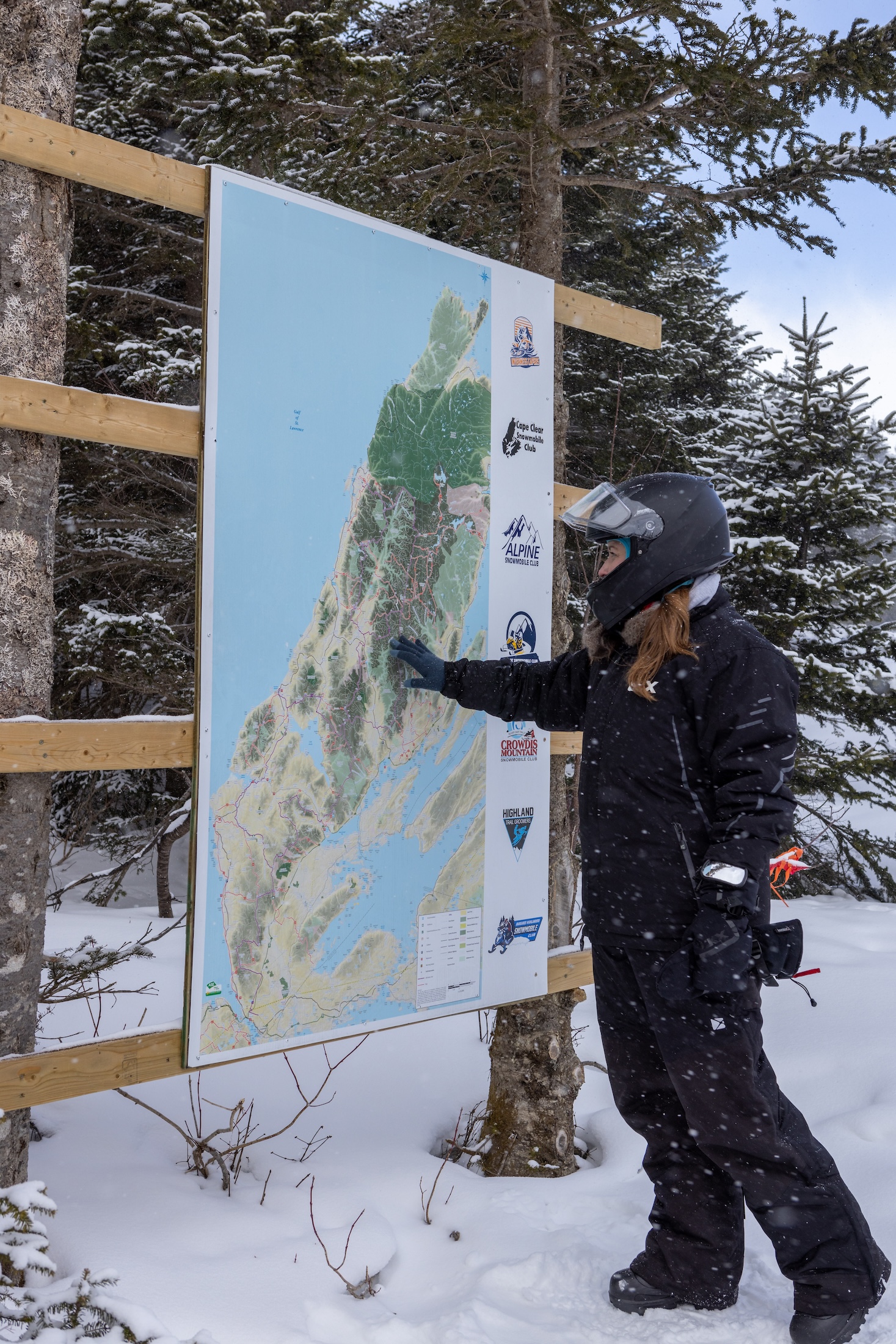
Proactive Risk Management
Being aware of potential risks and taking precautions can prevent accidents.
- Know the Trail Conditions – Snowmobile trails can change quickly due to weather and use. Watch for obstacles, ice patches and other hazards. Ride at a speed that allows you to react safely.
- Follow the Law – Check local snowmobile regulations, including licensing, trail permits and speed limits. Respect private property and protected wildlife areas.
- Stay Sober – Alcohol and drugs impair reaction time and judgment. Never ride under the influence.
- Monitor Weather Conditions – Sudden storms or rising temperatures can make riding dangerous. Always check the forecast before heading out and be prepared to adjust your plans.
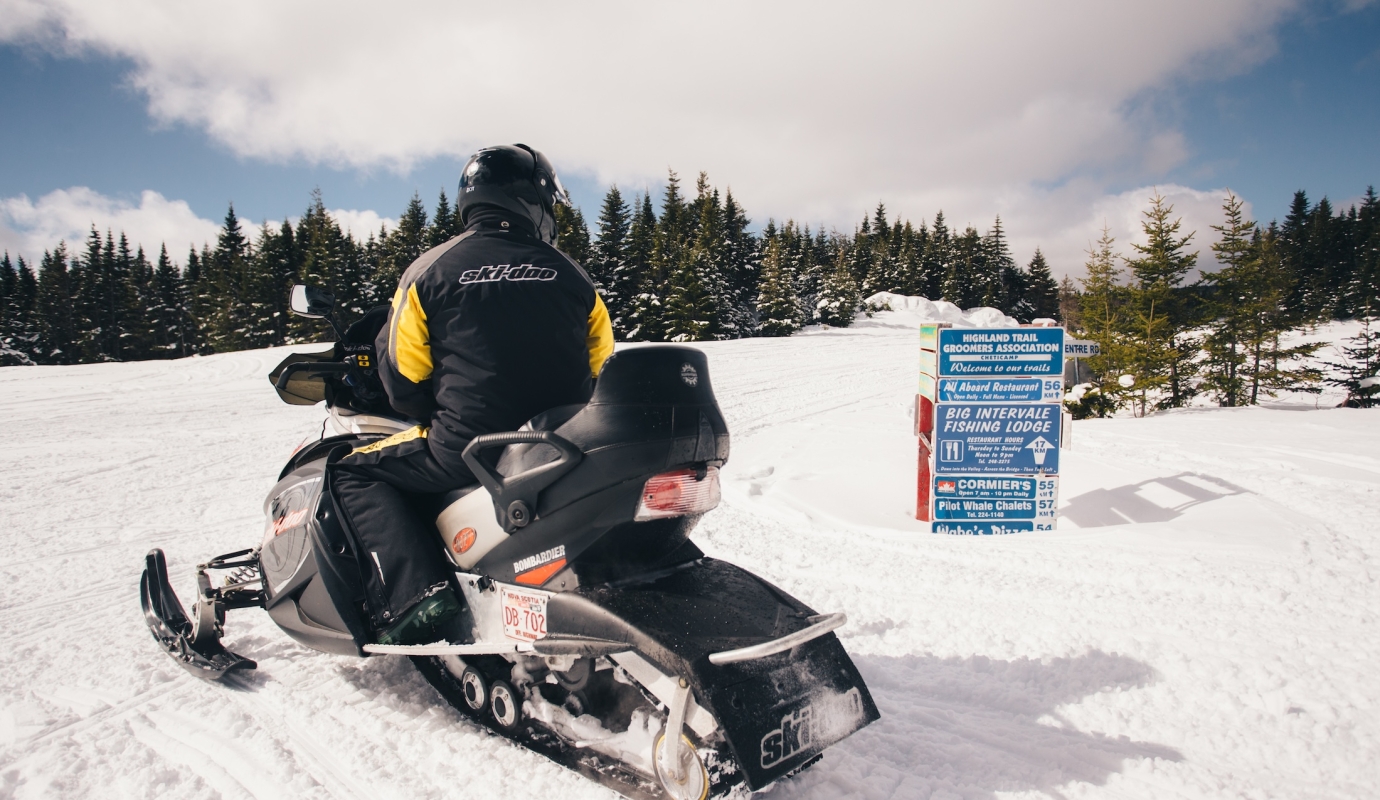
Risk Management tips from the Snowmobilers Association of Nova Scotia
The Snowmobilers Association of Nova Scotia assumes that each user of our trail system does so at their own risk and understands and accepts the “Assumptions of SANS Trail Use” as follows:
- All snowmobiles will be operated under a valid SANS trail permit.
- All operators and passengers willingly use the trails at their own risk.
- Operators and passengers know and will obey the laws pertaining to the operation of Off Highway Vehicles in the province of Nova Scotia.
- It is recognized and accepted that snowmobiling is essentially an off-road activity taking place in an unpredictable natural environment.
- The SANS is a volunteer-based organization with finite resources.
- It is not practical, possible or desirable to maintain all trails uniformly or to remove all potential hazards.
- The SANS provides the privilege of trail access without any guarantee of service or quality.
- Operators and passengers will not consume alcohol and/or drugs prior to or while using the trails.
- Operators and passengers will be prudent and responsible and shall ensure that snowmobiles are operated with appropriate care and control at all times.
- Operators and passengers know how to snowmobile competently and understand that the operation of snowmobiles requires full cognitive abilities.
- Weather conditions affect trails and snowmobile operation and they may change without warning.
- There may be permitted users on the trail other than snowmobilers.
- Operators will stay to the right of the trail, notwithstanding that there are no centre lines.
- Operators know that there may be grooming or other maintenance activities under way any time; day or night. This activity may take up the whole or any part of the trail and has the right of way.
- Operators and passengers know that snowmobile trails are not engineered highways.
- All operators and passengers know and will adhere to the principles published as the Safe Riders Pledge by the International Snowmobile Manufacturers Association.
- Operators and passengers are aware that emergency and cell phone service may not be available.
- Operators and passengers are aware that there are generally no legal requirements for signage on trails and when provided, it is only for assistance and convenience.
- Operators and passengers know that snowmobiling on SANS trails is regarded as a family-oriented activity.
- Operators and passengers know the unique and particular dangers of ice crossing.
- The grooming and maintenance of trails, when provided, is meant solely to enhance the comfort and enjoyment of the safe and prudent operators and passengers.
- Operators and passengers will dress appropriately for all conditions and will have appropriate safety and emergency equipment at all times.
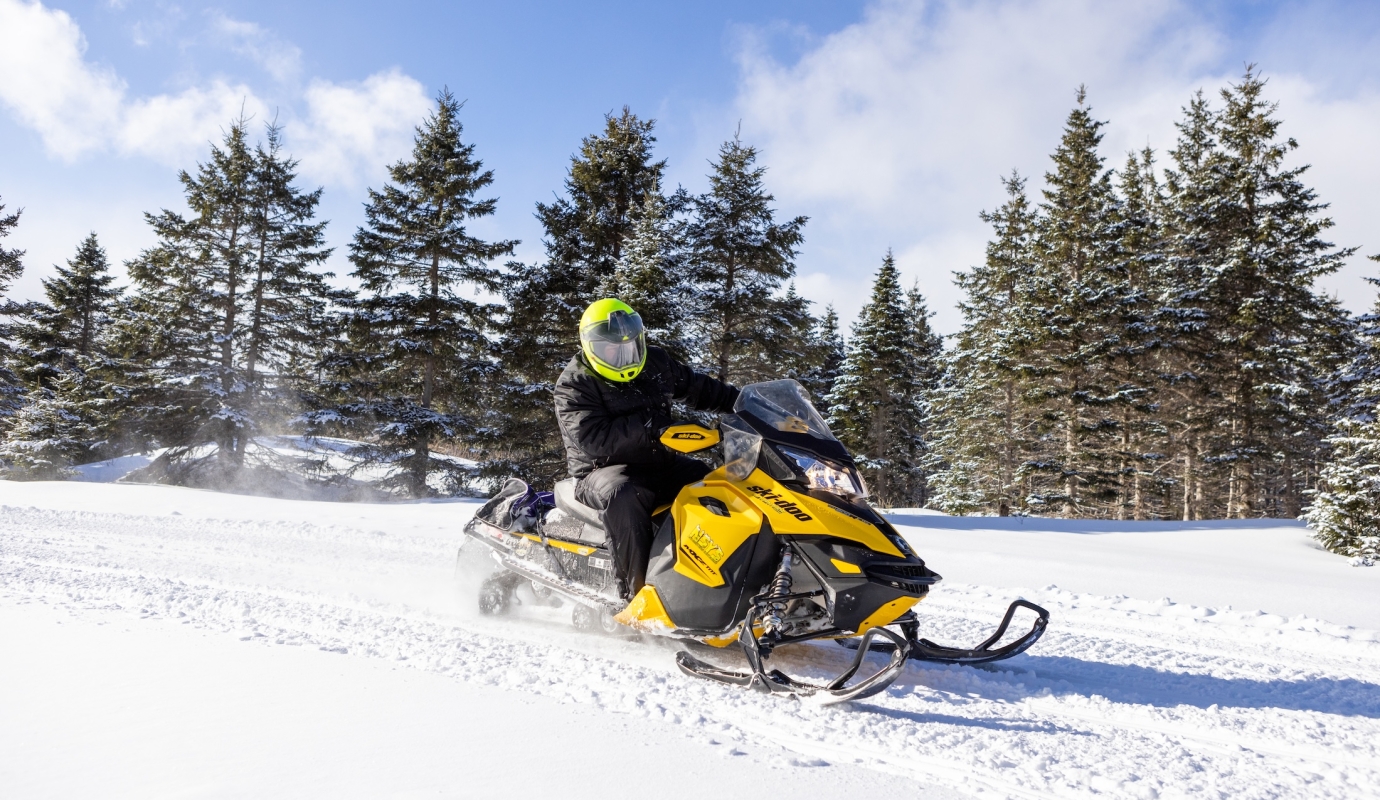
By choosing the right gear, planning your trip carefully and staying alert to risks, you can make the most of your snowmobiling adventure while staying safe. Ride responsibly, respect the trails and enjoy the journey.
Locals Know
Wondering where to stay on your next snowmobile getaway? These 10 drive-up accommodations provide easy access to/from the trail system.
Continue Reading
Join Ashley MacDonald, one of our Adventure Ambassadors, on an outdoor adventure along the Cabot Trail. If you enjoy skiing, snowboarding, snowshoeing or just the sound of nature, you'll enjoy this blog!
Continue Reading
Cape Breton Island is renowned for its breathtaking landscapes, and when winter descends, the island transforms into a wonderland of snow-covered trails, frosted trees, and serene vistas.
Continue Reading
Read through and see how many places, views, and experiences you can check off from this Epic Winter Bucket List!
Continue Reading






